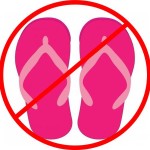There are various things we do to get the greatest benefit from our adjustments. For example we try to time them right. One wouldn’t want to get their neck adjusted only a few minutes before painting a ceiling. It’s not that painting ceilings should be forbidden, but holding one’s neck upward for a prolonged period of time right after getting it adjusted could disrupt what the body is trying to do.
There are other things that we like to think about to improve our chances of holding an adjustment. That’s why getting checked on the way home is probably better than at the beginning of a busy day. Developing good living habits makes a difference, too. Children growing up without subluxations in their spines are naturally healthier, so kids should have the advantage of periodic chiropractic visits. It also stands to reason that people getting good nutrition will hold their adjustments better than those living on junk food and fast food. Adequate rest along with good hygiene and wholesome exercise are life-style choices that surely help us hold our adjustments better.
A careful spinal analysis reveals the presence of subluxations that interfere with good nerve supply and there are some things you can do to help your chiropractor get the analysis done right. If it’s a hot day out, or a cold winter’s day, arriving at the chiropractor a while before your scheduled appointment helps. That’s because the time you spend in the reception area relaxing gives your body time to acclimate to our indoor temperature. This is valuable since your spinal analysis includes skin temperature measurements called, thermography. If it’s 20 degrees warmer outside than inside or vice versa, the scan may become inaccurate if taken too soon after you arrive. But after acclimating to our indoor temperature, the thermographic scan better reveals whether you have nerve interference (to help the chiropractor determine whether you need an adjustment).
Sometimes people ask us what they need to wear when they come here. Mostly the answer is simple, come as you are, but there are a few things to think about. Generally, I like to say “the less hardware the better.” The spinal analysis can be done just fine through clothing, but it’s best if zippers, buckles and uneven things in the clothes aren’t covering the spinal  column.
column.  We can work with most situations, but a few things do tend to get in the way. Extra-large belts, huge earrings, and stiff corsets come to mind as distractions. Oh, here’s something else – when we do a spinal analysis several things are measured, and one of those is the leg length equality. This is done when a person is face-down on the adjusting table and we look at the feet to compare the leg length. We’re checking to see if they are even, and it is most accurate to measure it with shoes on. That’s because feet are very curvy things, and the shoes give us a nice straight point of reference to measure against. Speaking of shoes, try to wear shoes that won’t fall off when you’re face down on the adjusting table. That would include some kinds of sandals (the kin
We can work with most situations, but a few things do tend to get in the way. Extra-large belts, huge earrings, and stiff corsets come to mind as distractions. Oh, here’s something else – when we do a spinal analysis several things are measured, and one of those is the leg length equality. This is done when a person is face-down on the adjusting table and we look at the feet to compare the leg length. We’re checking to see if they are even, and it is most accurate to measure it with shoes on. That’s because feet are very curvy things, and the shoes give us a nice straight point of reference to measure against. Speaking of shoes, try to wear shoes that won’t fall off when you’re face down on the adjusting table. That would include some kinds of sandals (the kin d that don’t have a strap behind the heel) and flip-flops, which tend to fall off easily. We don’t want a person to be clenching their toes to hold on the flip-flops, because it contracts the leg muscles and reduces the accuracy of the leg length equality test.
d that don’t have a strap behind the heel) and flip-flops, which tend to fall off easily. We don’t want a person to be clenching their toes to hold on the flip-flops, because it contracts the leg muscles and reduces the accuracy of the leg length equality test.
In summary:
- “Come as you are,” it will be fine under most circumstances
- Remember to avoid disruptive activities soon after getting adjusted
- On very warm days, or very cool days, arrive early to give yourself time to acclimate to indoor temperatures before getting checked
- It’s always a good idea to take some rest time after your visit
- Adopt a wholesome lifestyle and be sure to get your kids checked by your chiropractor
- Wear shoes that won’t fall off when you’re on the adjusting table
